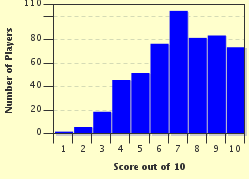Quiz Answer Key and Fun Facts
1. While Jesus was wandering the desert, Satan tried to tempt Jesus into turning some objects into BREAD to feed himself. What were these objects?
2. During Passover, Israelites were (and still are) required to eat unleavened BREAD. What does the eating of unleavened BREAD symbolise, according to the Bible?
3. In the book of 1 Kings, what type of birds brought Elijah meat and BREAD to eat?
4. On how many separate occasions (mentioned in the Bible), did Jesus miraculously increase the amount of BREAD on hand, to feed a multitude of people?
5. Although the ingredients are mentioned in a fairly "obscure" passage of the Bible, what was BREAD in the Bible commonly made out of?
6. When Jesus started sending forth his disciples for ministry work, did He want them to take BREAD with them on their journeys?
7. While the Israelites were in the wilderness after escaping from Egypt, in "the face of the wilderness lay a small round thing." This was special BREAD, a gift sent from God. What was this type of BREAD called?
8. In the Gospel of John, Jesus called himself the BREAD of _________.
9. When Joseph had been thrown into jail, two of Pharaoh's servants were thrown in along with him. One of the servants was Pharaoh's chief baker (who, obviously, baked BREAD). What was the title of the other servant whom was also thrown into jail?
10. In which of the following passages from the Book of Luke did Jesus give BREAD a new significance, by saying that it symbolised his body, which he was about to sacrifice for the salvation of the Earth?
Source: Author
thegogga
This quiz was reviewed by FunTrivia editor
CellarDoor before going online.
Any errors found in FunTrivia content are routinely corrected through our feedback system.

